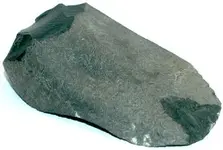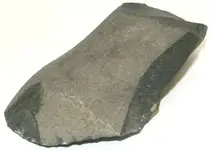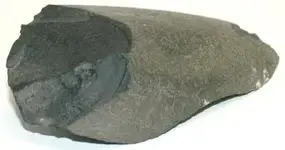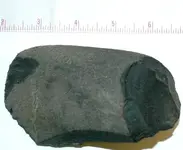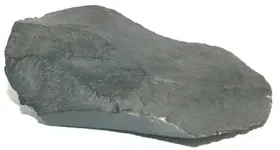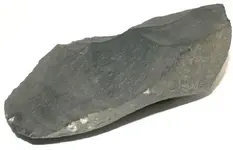Basalt
Basalt is a hard, black volcanic rock with less than about 52 weight percent silica (SiO2). Because of basalt's low silica content, it has a low viscosity (resistance to flow). Therefore, basaltic lava can flow quickly and easily move >20 km from a vent. The low viscosity typically allows volcanic gases to escape without generating enormous eruption columns. Basaltic lava fountains and fissure eruptions, however, still form explosive fountains hundreds of meters tall. Common minerals in basalt include olivine, pyroxene, and plagioclase. Basalt is erupted at temperatures between 1100 to 1250° C.
Obsidian
Obsidian is dense volcanic glass, usually rhyolite in composition and typically black in color. Compared with window glass, obsidian is rich in iron and magnesium; tiny (<.005 mm) crystals of iron oxide within the glass cause its dark color.
Obsidian is often formed in rhyolite lava flows where the lava cools so fast that crystals do not have time to grow. Glass, unlike crystals, has no regular structure and therefore fractures in smooth conchoidal (curved) shapes. The intersections of these fractures can form edges sharper than the finest steel blades. For this reason, obsidian was used by many native cultures to make arrowheads and blades.
The colors in obsidian result from the oxidation state of the chemical elements within the tiny minerals that are finely dispersed in the glass. Black color results chiefly from magnetite, Fe304. If the obsidian is highly oxidized, then the glass may contain hematite, which provides a reddish hue. Variations in the oxidation state of the iron (Fe) varieties imparts a slight greenish hue. Some obsidian is banded, a consequence of oxidation on a flow surface being folded into the lava as it continues to move.



